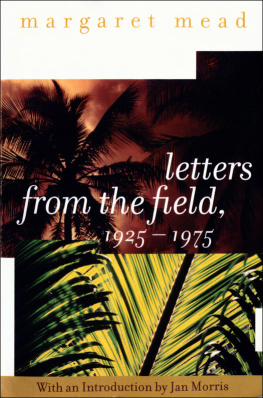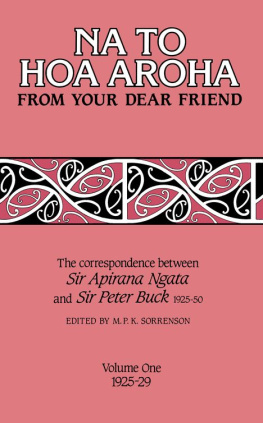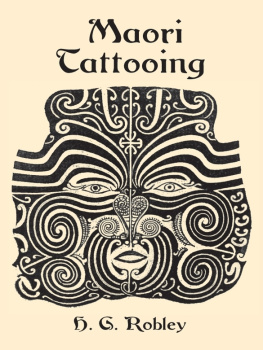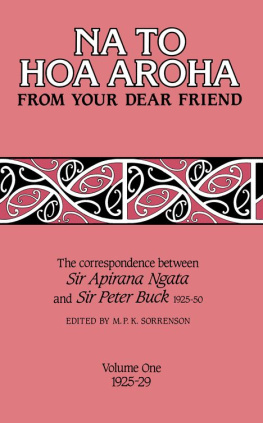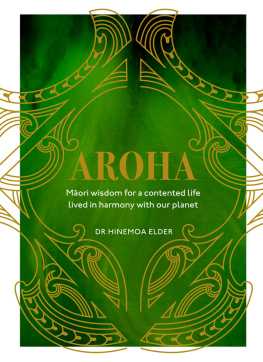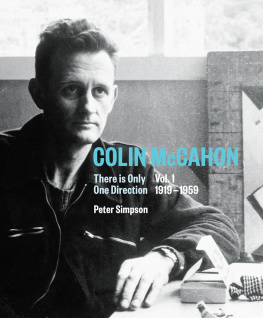T HIS VOLUME completes the correspondence of Sir Apirana Ngata and, as he finally became in 1946, Sir Peter Buck. It begins with Bucks letter of 15 August 1932, written from Colebrook, New Hampshire, as he and Margaret were touring New England, prior to settling in for the new academic year at Yale: a new phase in our correspondence, as he told Ngata. The collection ends with Ngatas letter of 5 March 1950, foreshadowing his death, some four months later, by admitting the strain on his failing strength of his many tribal and political activities. The letters in between record the ebbs and flows of their careers: Ngatas resignation as Native Minister following criticisms of his administration by a Commission of Inquiry, and his role as an Opposition M.P. following the victory of Labour in the 1935 election; Bucks experiences at Yale, his fieldwork in the Pacific, his brief return to New Zealand in 1935, and his Directorship of the Bishop Museum. But from 1937 the letters tail off: there are only four more to 1950. That last phase in the careers of Ngata and Buck is described in the Epilogue.
Colebrook, New Hampshire,
August 15, 1932.
Dear Api,
This commences a new phase in our correspondence. The scene has now shifted from Honolulu on the northern outskirts of Polynesia to the New England states, which border on the Atlantic.
We duly arrived in Victoria after a pleasant voyage. On the way over I had the pleasure of occasional drinks and conversation with Coates, Downie Stewart, and other members of the New Zealand delegation including Craig and Park. Victoria is the first port one touches on the western side of Canada. It is situated on Vancouver Island. I went ashore and explored the local museum. It is rich in material of the Northwest Pacific coast but contains no outside material. Many things in the material culture of the N. W. coast remind one of New Zealand in a vague general way; but when it comes to a minute analysis, the affinities disappear. The huge carved totem poles were rarely erected at the front of the houses and are pierced at the lower end to form the entrance into the houses. Though the human figure is carved on the round, the details are totally different to Maori carving . In addition to this many animal and bird figures, which represent the totems of the family, are included in the carving. Throughout Canada I have stood gazing at various totem poles and tried to find some affinity in the carving motifs, but without success. Attention has also been drawn to the weaving, but the differences in technique, which I enumerated in The Evolution of Maori Weaving The shape and finish of these canoes in no way resemble those of New Zealand. Another affinity remarked upon by some ethnologists was that of the composite halibut hook to the Ruvettus hook of Polynesia. Again in technique these two hooks have nothing in common.
Whilst I was examining the museum the New Zealand and Australian delegations were being fed, libated, and orated at by the local representatives of the Canadian Government. It was quite interesting to see the red coats, spurs, cocked hats, and top hats which were waiting on the Victoria wharf to escort the representatives of the Overseas Dominions to the Governors luncheon.
The same day we arrived at Vancouver which is on the mainland and not on Vancouver Island. It is Canadas most important port on the Pacific and at the western end of the Canadian Pacific Railway. We stayed over for a couple of days while the delegations moved on to Ottawa. Here I examined two museums. The Public Library and Art Gallery contained an ethnological collection confined to material from Canada. Amongst the Indian stone pounders or stone pestles was one remarkably like a poi pounder from Hawaii. I queried its authenticity, but the curator was able to prove to his own satisfaction that the stone implement was obtained in British Columbia . The University of British Columbia had a South Seas collection, which I was enabled to examine through the courtesy of the President, to whom I had a letter of introduction. The collection was donated by a Captain Burnett who had made various voyages through the South Seas. Much of the material was wrongly labelled, of course; and I was able to check it over with the custodian. There is no Chair in anthropology at the local University . In the New Zealand material there were some fine onewa The putorino was so beautifully polished that the custodian said it was made of copper. I got him to unscrew the case and examination proved that it was of wood, with the usual lashings, and altogether a beautiful piece of workmanship.
We left for the East on the Canadian Pacific Railway, leaving in the morning so as to see the celebrated Rocky Mountains. The scenery is really magnificent, yet it all reminded me of something I had seen before. We passed up the famous Kicking Horse Valley and saw Hells Gate, where the river swirls through constriction in the rocky bed. Without being unduly provincial it reminded me of the Manawatu Gorge, but there was more of it and it stretched for a longer distance. The Rocky Mountains with snow-capped peaks gave me no thrill. The peaks were merely elevations on the general range and did not stand up so prominently, to my mind, as the Tongariro trio and Mount Egmont. We saw some glaciers, but I imagine they would cause no greater thrill than the Franz Josef. At the top of the Great Divide, from which the waters flow in opposite directions, there is a monument to Sir James Hector. Doctor Hector, as you know, did geological work in Canada before coming to New Zealand. He was with the expedition under Captain Palliser and while passing his riding hack to adjust the loosened pack on a packhorse, his own horse kicked him, which led to his being laid up for a couple of days. The adjacent river was hence named Kicking Horse River. The monument erected to his memory was established by England and Canada. The sight of the memorial gave me a thrill, as New Zealands memorial to Sir James Hector is the Hector Medal, which I happened to receive this year. We did not stop at the great tourist resorts at Banff and Lake Louise for we thought that these places would again be reminiscent of tourist resorts that we had seen in our own land. Both are expensive and money can be better utilized than in tipping the parasites which infest such localities.
From the Province of British Columbia we passed on through the provinces of Alberta and Saskatchewan. Here there are miles and miles of flat land stretching to the horizon on either side. Next followed the Province of Manitoba with similar flat areas stretching as far as the eye could see and beyond. These are the great wheat Provinces of Canada, and one can understand the great possibilities that the country possesses. Canada needs more population and also an outlet for her wheat. It is little wonder that both Australia and Canada need preference within the British Empire against the wheat of Russia. The next Province was that of Ontario of which the main town is Toronto. Here we got off to have a look round the city.
Our trip from Vancouver to Toronto took us four nights and three and a half days. The trip right through to New Haven cost about one hundred thirty seven dollars each, including the sleeping compartment as far as Toronto. The sleeping compartment was very comfortable with two large bunks, hot and cold water laid on to a washing basin, and a flush water closet all complete within the one compartment. Margaret says that I must be sure and mention the fact that iced water was also laid on for drinking purposes. A negro attendant looked after the compartments and cleaned our boots. The dining saloon provided good food which you selected from a menu card and paid for according to your selection. At Vancouver an observation car with easy chairs and full windows on either side was put on in order that the passengers might have an unobstructed view of the scenery. On passing through the Rockies it was taken off. On the way over I read The Romance of the Canadian Pacific Railway. It was as interesting as a novel and brought out the great struggle that the founders of the railway had not only against physical obstacles presented by nature, but also against economic and political opposition. It is universally held that the Canadian Pacific Railway helped to develop and make Canada. It is curious in view of this how the Government came to establish the Canadian National Railway at a huge cost from public funds. The National Railway has never paid and has been a huge drain on Government funds. The President, Sir Henry Thornton, looked upon as one of the ablest railway men in the world, has spent money like water. Huge hotels costing millions of dollars have been built in connection with the railway in the various large cities. The latest is the one in Vancouver, which contains goodness knows how many rooms and has not been completed owing to lack of funds. It stands as a monument to high-powered competition. Owing to questions raised in Parliament concerning the excessive spending of money, Sir Henry Thornton has just resigned as a protest against the lack of public confidence reposed in him.



